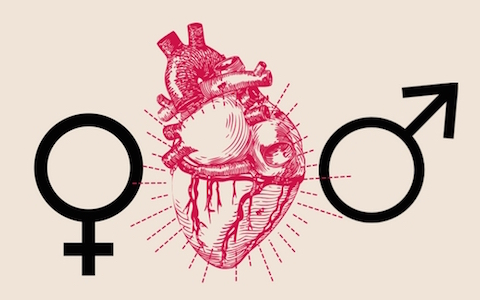Women are more likely to die from heart disease than men.1 This month is Heart Health Awareness month and already there have been a myriad articles published on the subject. Many of the articles discuss how medicine for women is often simply extrapolated from what has been learned and done with men. They argue that it is time to take a closer look at the opposite sex and their hearts, and how this will benefit everyone’s health.
Heart disease is the leading cause of death for both sexes in the United States.2 Years of research has shown that the disease doesn’t manifest the same, isn’t experienced the same, isn’t treated the same, nor are the effects on the body the same in men and women. For instance, it has long been known that low socioeconomic status is a risk factor for cardiovascular disease (CVD), but it has now been shown that disadvantaged women are actually at a greater risk for CVD than their male peers.3 Here are some of the other findings released over the past month:
Children and heart disease
An American Heart Association study has shown that delivering a baby preterm, or prematurely, before 37 weeks gives the mother a 40 percent increased risk of developing CVD.4 If they deliver before 32 weeks the risk of CVD doubled.4 In the journal Circulation it was shown that multiple pregnancies (successful or not) could increase a mother’s risk of developing atrial fibrillation—an irregular heart rhythm that increases the risk of stroke.5
There is a significant relationship between the number of children one has and the risk of CVD and stroke in both men and women. Having one child decreases risk because of a sort of “safety net” effect, while any more than that causes higher risk that the researchers attribute to potential economic stress. Further research also found that having a greater number of children could also be associated with a higher risk of diabetes in both of the sexes.6
Basic biological differences
UT Southwestern Medical Center has been engaged in a long term study on the differences between the sexes when it comes to their hearts. They have discovered a vast difference in the levels of many proteins. This made researchers realize that they had to account for these difference when diagnosing and treating men and women. Some key findings were that women:
-
tend to have higher levels of fat hormones.
-
tend to have higher levels of clotting proteins.
-
tend to have lower levels of proteins that reflect unhealthy arteries.
-
tend to have higher levels of certain markers of inflammation.7
Finally, for the first time, researchers pinpointed a type of heart fat linked to menopause and estrogen levels, which increases a woman’s risk for CVD.8
Action
Many of these studies concede that heart disease can be more difficult to diagnose in women—partly because of biology and partly because of the man-centric treatment and study to date. In every day practice, the omnipresent “eat healthy and exercise” is fundamental advice for maintaining a healthy heart. In addition to this regular care, a new national survey by Orlando Health found that most women should begin heart screenings at the age of 20 and not the popularly believed 30.9 Once you have been diagnosed with CVD, you will always have it, it is chronic but it is manageable. It is important that women ensure their doctor is familiar with the differences between men and women, and it is essential that the research moving forward take a gender-equal approach to its scientific inquiry.
Read a UT Southwester Medical study on the need to re-evaluate the diagnosis and treatment of heart disease in women:
1. http://www.news-medical.net/news/20170201/Cardiologist-reveals-13-facts-about-heart-disease-in-women.aspx [return]
2. [return]
3. http://jech.bmj.com/content/early/2016/12/14/jech-2016-207890 [return]
4. http://circ.ahajournals.org/content/135/6/578 [return]
5. http://circ.ahajournals.org/content/135/6/622 [return]
6. http://www.ctvnews.ca/health/having-more-children-could-increase-risk-of-cardiovascular-disease-for-both-parents-1.3272721 [return]
7. [return]
8. http://jaha.ahajournals.org/content/6/2/e004545 [return]
9. https://www.sciencedaily.com/releases/2017/01/170123094650.htm [return]






